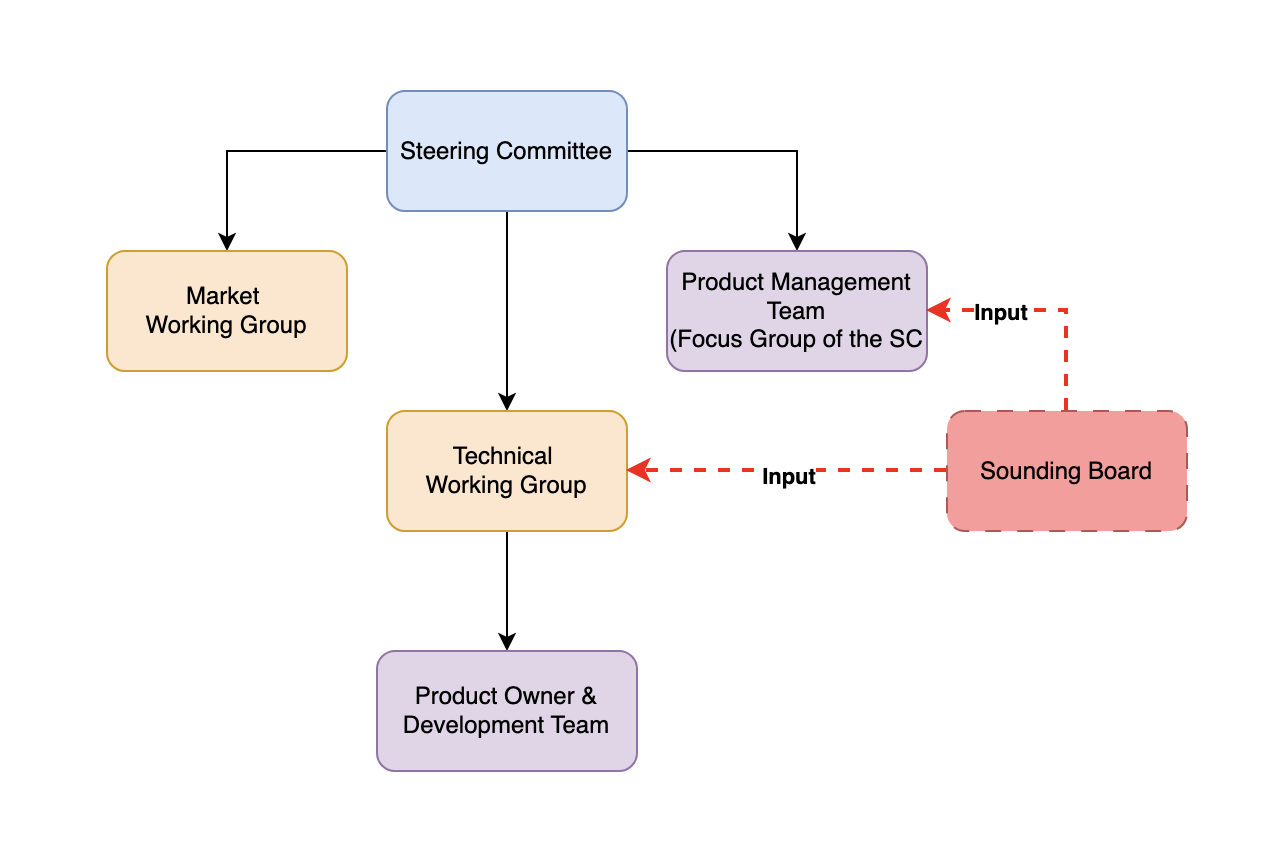Margo Governance
Margo Project Charter
The Margo Charter serves as the authoritative document that establishes the framework for the project. It outlines the rights, responsibilities, structure, purpose, and objectives associated with the project.
Technical Working Group Collaboration Framework
Key provisions within the charter encompass the following areas:
- Copyright Licensing: This section details the terms and conditions under which copyrighted materials may be used within the project. It may specify permissible uses, restrictions, and applicable fees or royalties.
- Patent Licensing: This provision addresses the licensing of patents relevant to the project. It outlines the rights granted to project participants to use patented inventions, any limitations on those rights, and the procedures for obtaining licenses.
- Patent Exclusion: This clause may exclude certain patents from the project's scope. It may specify particular patents not licensed under the charter or define criteria for excluding patents.
- No Other Rights: This provision clarifies that no rights or licenses are granted beyond those explicitly stated in the charter. It ensures that the charter is the sole source of rights and prevents implied licenses or grants.
- Representations, Warranties, and Disclaimers: This section includes statements about the project's status, capabilities, and limitations. It may disclaim any warranties or guarantees and outline the responsibilities of project participants.
- Source Code License: This section defines the terms under which source code may be used, modified, and distributed within the project. It may specify the type of license (e.g., open source, proprietary), permitted uses, and any obligations for sharing modifications.
- Definitions: This section provides clear and concise definitions of key terms used throughout the charter. It ensures that all parties have a common understanding of the terminology and prevents ambiguity or misinterpretation.
Governance Structure
A governance structure is a system of rules, processes, and practices that define how an organization is governed. It establishes how decisions are made, power is distributed, and stakeholders are involved in the organization's decision-making processes.
Key components of a robust governance structure typically include:
- Leadership bodies (e.g., Steering Committees, Working Groups)
- Decision-making processes and authority levels
- Policies and procedures
- Reporting and communication channels
- Mechanisms for oversight and accountability
Margo Organisation Structure

Steering Committee
The Steering Committee plays a crucial role in the governance structure of an organization or project. It typically comprises senior leaders and key stakeholders who provide strategic guidance, make high-level decisions, and ensure alignment with organizational goals. The committee's responsibilities often include:
Margo Chair

Bart Nieuwborg
Professional Summary
The SC’s responsibilities often include:
- Overseeing the ratification of all projects before public release.
- Establishing and communicating the organisation's direction, goals, and priorities.
- Approving the creation of new Working Groups, significant initiatives, and allocating resources accordingly.
- Monitoring the progress and performance of ongoing projects and initiatives.
- Resolving conflicts and addressing escalated issues in a timely and effective manner.
- Ensuring accountability and compliance with relevant standards, regulations, and best practices.
By providing oversight and leadership, the Steering Committee helps maintain focus, drive progress, and navigate challenges throughout the project or organization's lifecycle.
Working Groups
Working Groups are specialized teams within the Margo that focus on specific areas or tasks. These WGs are primarily composed of experts and stakeholders who collaborate to address particular challenges, develop solutions, or drive initiatives forward.
Margo Technical Working Group Chair

Armand Craig
Professional Summary
Working Groups play a vital role in the governance structure by:
- Approve Projects
- Resolve technical conflicts
- Providing in-depth expertise on specific topics
- Conducting research and analysis
- Developing recommendations and proposals
- Implementing approved strategies and projects
- Facilitating cross-functional collaboration
By leveraging their members' collective knowledge and skills, Working Groups contribute significantly to the organization's overall goals and objectives.
Focus Group
Focus Groups are essential to the Margo governance structure, representing specific initiatives or endeavours to achieve organizational goals. These projects are typically aligned with Margo's mission and objectives, and they serve as the primary vehicles for implementing strategies, developing solutions, and driving innovation. Within the Margo governance structure, Focus Groups play a pivotal role, embodying specific initiatives or endeavours that directly contribute to the achievement of organizational goals. These projects are meticulously aligned with Margo's mission and objectives, serving as the primary driving force behind implementing strategies, formulating solutions, and fostering innovation.
Focus Groups within the Margo framework are characterized by:
- Clear objectives and deliverables
- Defined timelines and milestones
- Allocated resources and budgets
- Designated project teams or working groups
- Regular progress reporting and evaluation
Sounding Board
Sounding Board emphasises collaboration to tackle end-user pain points effectively.
Sounding Board collaboration strategy:
- Iterative
- Transparent
- Tangible and interactive: User scenarios and use cases are focal points
- Problem Solving: It offers a safe space to explore challenges, brainstorm solutions, and gain different perspectives.